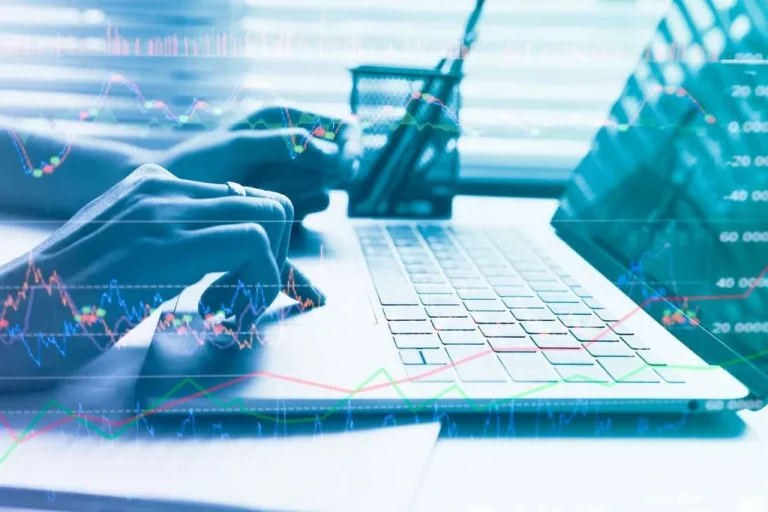Content
Cryptocurrency trading app Binance is launching an NFT marketplace, and Coinbase Global how to create a non-fungible token (COIN -2.61%) might do the same (it has invested in several NFT marketplaces, including Rarible). As the examples from Grimes and other artists show, NFTs have gained popularity in the art world. They provide a way for digital artists to monetize their work and for collectors to own unique digital assets. They also have potential applications in other industries such as gaming, virtual worlds and digital collectibles. Currently, the most popular usage for NFTs is digital artwork, though other mediums including music, videos, and video game accessories are gaining popularity. NFTs can also be used to trade contracts that represent ownership of real-world items, such as property rights, tickets for football games and concerts, and other tokenized investments like wine or art.

Use cases of NFTs in science and medicine
NFTs have the potential to alter digital exclusivity and redefine digital property rights. Celebrities have started to partner with NFT ventures, and others have broken records in terms of sales. https://www.xcritical.com/ ” We can anticipate continued NFT growth in 2023 and beyond. We can also predict greater integration between DeFi and NFTs, making them more liquid and valuable. To summarize, combining art and collectible attributes seems to be one of the most effective ways to draw new buyers.
What are uses and examples of NFTs?

Learn more about the benefits of small Decentralized finance business membership in the U.S. In economics and finance, “fungible” refers to the characteristic of an asset where its individual units are essentially interchangeable. One unit of a fungible asset can be directly replaced by another unit of the same asset without affecting the value or utility of the asset.
Exclusive NFT Q&A with outside experts
There have been some attempts at connecting NFTs to real-world objects, often as a sort of verification method. Nike has patented a method to verify sneakers’ authenticity using an NFT system, which it calls CryptoKicks. Linkin Park’s Mike Shinoda (who also sold some NFTs that included a song) actually talked about that. It’s totally a thing someone could do if they were, in his words, “an opportunist crooked jerk.” I’m not saying that Logan Paul is that, just that you should be careful who you buy from. It would be hilarious if Logan Paul decided to sell 50 more NFTs of the exact same video. NFTs can work like any other speculative asset, where you buy it and hope that the value of it goes up one day, so you can sell it for a profit.
NFT stands for Non-Fungible Token.
We do not include the universe of companies or financial offers that may be available to you. Here we discuss cryptoasset compliance, blockchain analysis, financial crime, sanctions regulation, and how Elliptic supports our crypto business and financial services customers with solutions. We launched Emprops.ai as the first NFT platform to mint generative AI,” Greenberg said. His project ‘The Oracles,’ with 1,000 unique tokens, is the first long-formgenerative AI project of its kind. NFTs can be configured such that your business receives revenue every time it is sold.
For example, the buyer was to be written about in a future story and would receive a message from a popular podcaster. He says many people currently involved in NFT markets “are not really thinking it through carefully.” At the same time, Dilendorf said he does expect NFTs to continue to grow. In February, a 10-second video showing an image of former U.S.
- The result is an ever-growing list of cryptographically linked records.
- NFT art is digital art tokenized in the blockchain, much like any other NFT object.
- The process to buy or sell NFTs is also conducted via the blockchain.
- The ERC721 standard accelerated both the development and launch of new NFTs, as well as the creation of various marketplaces like Rarible, OpenSea, and SuperRare.
- Also, some NFT marketplaces have a feature where you can make sure you get paid a percentage every time your NFT is sold or changes hands.
- This means that if owner A sells the NFT to owner B, the creator receives 5% of the transaction price.
NFTs work by utilizing blockchain technology, the same system employed by cryptocurrencies. The majority of NFTs are stored on the Ethereum blockchain, though other blockchains like BNB Smart Chain and Flow also support NFTs. The art market is one of the traditional industries that NFTs are disrupting.
In the boring, technical sense that every NFT is a unique token on the blockchain. But while it could be like a van Gogh, where there’s only one definitive actual version, it could also be like a trading card, where there’s 50 or hundreds of numbered copies of the same artwork. Also, some NFT marketplaces have a feature where you can make sure you get paid a percentage every time your NFT is sold or changes hands. That makes sure that if your work gets super popular and balloons in value, you’ll see some of that benefit. NFTs offer unique benefits to holders, including exclusive content or experiences.
Sales have absolutely slumped since their peak, though like with seemingly everything in crypto there’s always somebody declaring it over and done with right before a big spike. Absolutely not, but I’m sure there are plenty of folks in NFT-based communities that are sure they’re still on the gravy train. The founder of Twitter sold one for just under $3 million shortly after we originally posted this article. Adopting responsible practices can mitigate the environmental impact of NFTs. Recycling outdated or damaged computers can help reduce electronic waste and decrease the energy consumption required for manufacturing new devices.
It’s not bulletproof, but it’s better than having your million-dollar JPG stored on Google Photos. At one point I thought that the kittens would be used in games in a somewhat interesting ways. That glimmer of hope has been decimated by the fact that almost every salesperson in the NFT space promises that their tokens will be part of a game or metaverse.
As a result, there are innumerable individual NFTs representing works of art, videos, video game content, music, and more. As more artists and creators make use of NFTs to secure and monetize their work, this number will only increase over time. Blockchains were initially developed for fungible assets such as cryptocurrencies. But the Ethereum blockchain, among others, also supports tokens that include information about digital assets.
NFTs are most widely recognized for their use in the digital art world. Digital artists can create unique pieces and sell them as NFTs. The buyer receives proof of ownership, while the artist can continue to profit from future sales of the artwork through royalties embedded in the NFT. This model provides artists with a novel revenue stream that was not feasible with traditional art sales. It could be interesting to see how the NFT industry evolves.
However, until now, in-game items, even bought with real currency via microtransactions, don’t really belong to the players. NFT can change this situation by giving players more control over their in-game items. The reputation and popularity of the creator also largely influence an NFT’s worth, with works by renowned artists or celebrities often commanding higher prices. Utility is another important factor; NFTs that offer additional benefits, such as access to exclusive content or events, can be more valuable.
Once an NFT has been minted, every subsequent sale is considered a sale on the “secondary market.” The word “fungible” means “interchangeable.” Examples of fungible items include currency and stocks. They are interchangeable because they’re essentially identical. There’s no difference in value between a dollar bill and another dollar bill, or one share in a company and another share of the same company. Sometimes the media the NFT points to is stored on a cloud service, which isn’t exactly decentralized.



